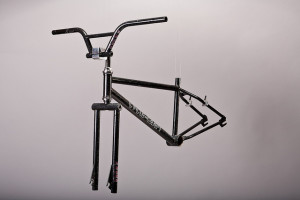With 15 years of experience in the edtech sector, I’ve seen great examples and things go wrong. This is the third in a series, sharing suggestions for how to make great edtech.
Don’t see users. See Teachers and Children.
Don’t talk amongst yourselves. Create in the open.
Don’t wait for a community to come to you. Close the loop.
If you know anything about Lean/Agile, or have heard about the Open movement (eg, Open Source, or Open Data), then the statements above will seem self-evident. However, they are far too often misunderstood or ignored by Edtech creators.
I have watched the Agile and Open movements grow and evolve over the years, and seen how they have transformed some parts of our digital infrastructure. There is plenty of evidence that lean/agile leads to ‘better’ projects. While Open is more of an ideological approach that has transformative benefits for social groups, it matches the
I am not an evangelist for agile or open, though I think they are awesome. I am an evangelist for great learning experiences, and that is why I want leaner and more open edtech.
So, when I read the 37Signals manifesto their way of working seemed radical but resonant with my values and experiences working with schools. The first item in the manifesto reads:
“Users.
Sounds like a bunch of junkies or gigolos, doesn’t it?
The people who visit web sites aren’t “users,” click-throughs, hits, numbers on a spreadsheet, or some other form of dehumanizing jargon. They’re your husband, your mom, your friend, the guy who sits in the cube next to you. They’re real PEOPLE, just like you and me.
That’s why we think a successful site is one that makes real people’s lives easier; One that makes them say, “This site worked for me.” So we’ve made it our mission to ensure this kind of experience at the sites we build. At 37signals we don’t see users, we see people.”
If you forget this basic and simple principle, your project will be a bike without wheels. OK, you might create something that is successful in some ways, but it will not go as far as it could. It might even be commercially successful in the short term, but you won’t be able to shift with the people it is for. This does not mean that you build one huge solution that seeks to please everyone, for all their needs.
Build for where teachers teach and children learn. Pick a point in that relationship and make it better. The only way to find out where these places are is to be there too. Don’t just have an engagement strategy or marketing plan: be there, now. You should have decided whether you are a step ahead of the majority of teacher, clearing the way to new pastures, or following the crowd, helping them along.
If you don’t have anyone who spends time there in your team, then you need to work even harder to build in classrooms, staffrooms, playgrounds, bedrooms, or the places that your edtech will be used, with the people who will use it.
By creating in the open, you demonstrate your commitment to the work that educators do, and to the learning that children value. You will also get feedback, when you need it, in the iterative and informed development of the edtech that you are working so hard on.
Don’t tell them you have the solution. If you get this right, they will see that it is better than the competition and shout about it because it works, and because they trust you. Be really clear about why you are doing it – answer the 5 ways – and discuss it with them
When this happens, close the loop, and make it a conversation. Don’t leave your community once you’ve got what you think you needed – talk with them. Not as a customer service activity – but because it is polite and respectful. Say ‘Thank you’, ask them how they are doing, listen to the answers, show you understand that life is complex, and respond honestly. If you can help them because it fits with your purpose and their needs, do so. But if you have to say no, don’t be afraid. If you don’t know, say so, and explain what it is you need help understanding.
How do you build better edtech?
- See people
- Create in the open
- Close the loop
I’ve helped organisations create awesome edtech, but also learned a lot of lessons from my mistakes. If you’d like to learn more from my experiences (rather than find the bear traps on your own) then let’s talk about what you are trying to achieve and how these simple principles can be applied to your context.

